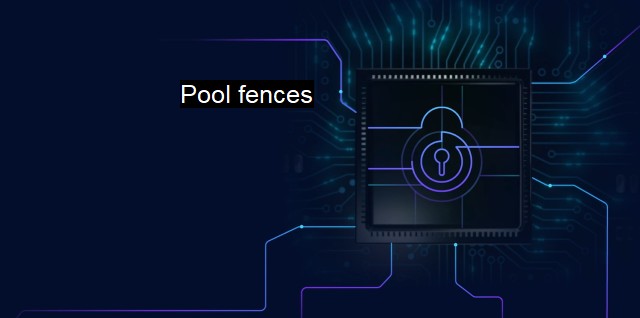What are Pool fences?
Protecting Your Digital Assets: The Importance of Antivirus in Cybersecurity
In the broad realm of cybersecurity and antivirus deployment, "Pool Fences" might come across as an unusual term. Some may naturally associate it with a physical barrier around an area of water to prevent unwanted intrusion. Yet the phrase symbolizes something markedly different with similar principles.Pool Fences, are a cybersecurity-oriented concept analogized from the pool fence model that applies to the world of digital networks and software with slight redefinition. Generally, it refers to a layering security model or framework that is adopted to prevent and tackle unwanted cyber intrusions or threats, similar to the intention behind erecting a fence around a pool.
Pool Fences represent the crucial cybersecurity defensive architecture component that aims to build strongperimeters within a network or around data to protect them from cyber threats. The idea is to use multiple security layers or 'fences' surrounding a core unit within a system. Centralized data or those of particular importance realize the pool, while the numerous protective layers make up the fence.
This model should not be visualized linearly, though. Rather, it is a multi-dimensional, 360-degree protection shield that encompasses the crucial data within an organization or network. These fences routine involve firewall systems, encryption mechanisms, user authentication protocols, secure conduction for transactions, and several more data protection means as their components.
Organizations worldwide have come to realize that a uniform set of protective measures spread equally across all network nodes or all data is not necessarily the most effective cybersecurity strategy. The Pool Fences model helps focus the attention and resources on guarding the most crucial parts of a network or data set without compromising on broader security. An apt analogy can be deemed a guarding an impenetrable fortress protecting a kingdom's capital, where the defense focuses on the core while also defending against periphery-based invasions.
The implementation of Pool Fences does not only decrease the risk of unauthorized data access but also aid in the containment of potential risks, acting as a blockade for potential malware, limiting their spread in case they breach the exterior fences.
Further, Pool Fences aren't solely about the hardware or software elements. These also emphasize ensuring that the practices used by organizational elements - both humans and systems - reinforce data security. Education plays a proactive role here. Ensuring network users understand how to steer clear of suspicious online activity and identify potential threats can go a long way towards strengthening these layers of defense.
To put stands, firewalls as part of Pool Fences represent the foundations of this ideology. Firewalls monitor network data traffic, which can be inspected for red flags suggesting lurking threats or risk elements. Further, encryption tools as part of Pool Fences attempt to encode or clothe the data housed within, making it unreadable and thus worthless, for anyone who manages to access it through illicit means. Simultaneously, authentication measures ensure that access is provided only to verified users through multifactor authentication and other methods. The antivirus also comes into play here, acting as the net designed to catch, isolate, and eliminate the threats that escape other parameters.
Taken together, these elements form the holistic cybersecurity approach known as Pool Fences. By treating each piece of the organization's cybersecurity as a small, interconnected fence, organizations can ensure that they are providing the most rigorous—and yet most adaptable—security possible. Therefore, Pool Fences serve as an effective way of encapsulating focus on all key threat indicators, exhibiting an effective encrypting mechanism around the vulnerable parameters of a network or software's eco-system.

| | A | | | B | | | C | | | D | | | E | | | F | | | G | | | H | | | I | | | J | | | K | | | L | | | M | |
| | N | | | O | | | P | | | Q | | | R | | | S | | | T | | | U | | | V | | | W | | | X | | | Y | | | Z | |
| | 1 | | | 2 | | | 3 | | | 4 | | | 7 | | | 8 | | |||||||